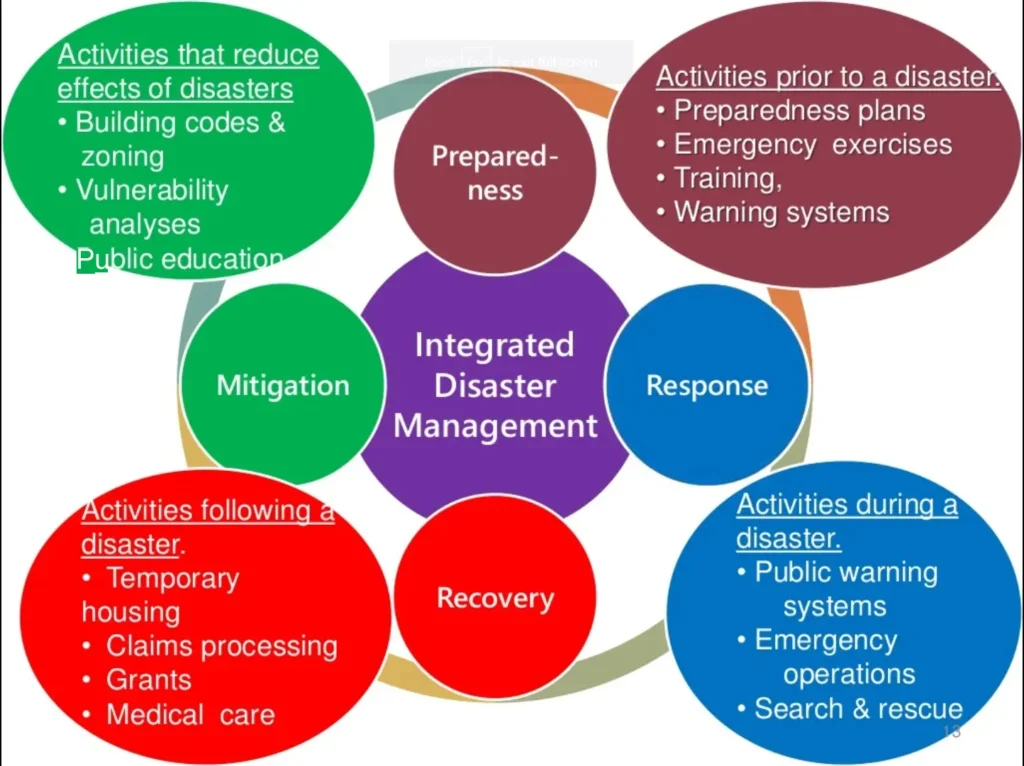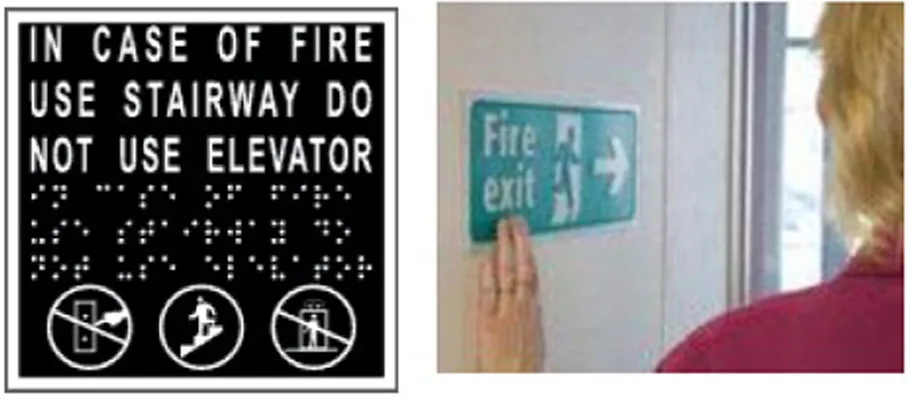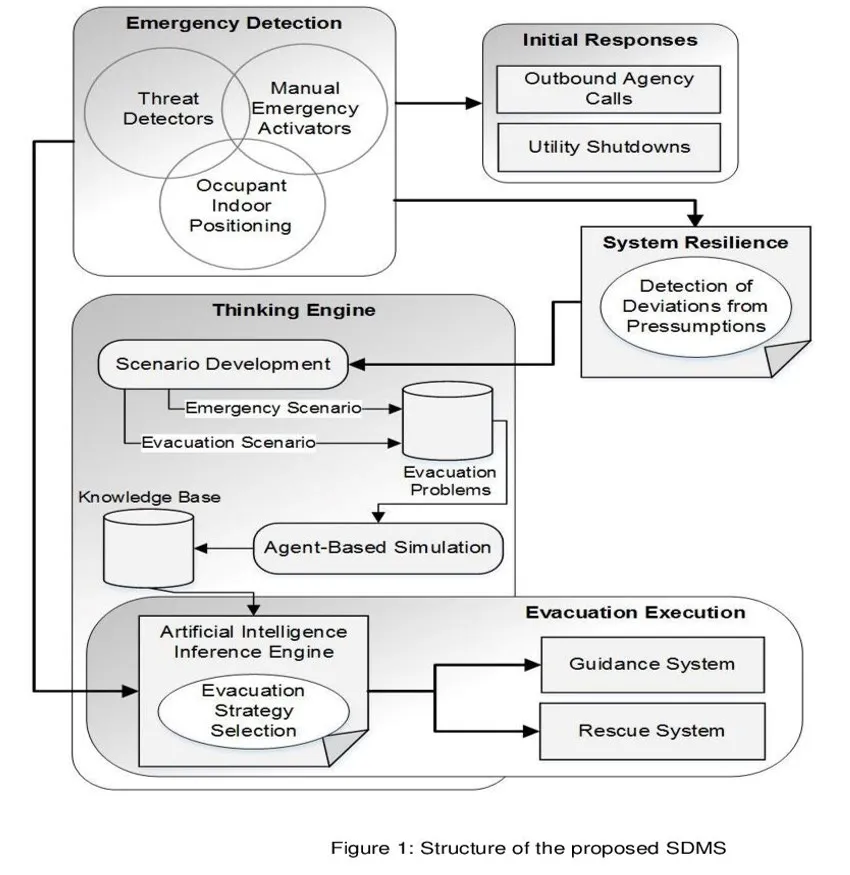If you want to know about the technical challenges for tall building or history of tall building or sitting of multistorey building, please click the link.
Disaster management of tall buildings is a critical issue that requires careful planning and preparation to ensure the safety of building occupants and first responders.
1) What is a disaster
- A disaster is the product of a hazard such as earthquake, flood or windstorm coinciding with a vulnerable situation, which might include communities, cities or villages.
- A hazard is defined as a dangerous condition or events that threaten or have the potential for causing injury to life or damage to property or the environment.
- There are two main components in this definition: hazard and vulnerability. Without vulnerability or hazard there is no disaster. A disaster occurs when hazards and vulnerability meet.

2) Classification of disaster
i) Natural
- Earthquake
- Cloud Burst or Heavy Rainfall
- Wind Pressure
- Lightning Strike
ii) Human caused
- Fire
- Building Collapse
- Vehicular Accidents
- Security Breach
- Malfunctioning of Lifts
3) E.A.P. (Employee Assistance Program) For tall buildings
- The management of building occupants within high-rise buildings is a primary concern during emergencies. The most common event is ‘FIRE’.
- While procedures for fire evacuation have been developed and adopted by major fire and emergency services.
- The existing procedures for limited evacuations in the event of a fire in a high-rise office building (evacuation of fire floors and floors above and below the fire) have proved effective in ordinary emergencies.
- But there is need for additional life safety procedures, other than those for fire, are required to protect the occupants of buildings in the event of an All-Hazard Emergency.
- The building owner should maintain at the building ECC (Emergency Command Centre) the following items to assist the FLSD, DFLSD and First Responders:
- A Pre-Incident/Building Information Card
- Building master keys
- Current as-built drawings
(a) Floor layout
(b) Fire wall separations
(c) Stair configuration
(d) Sprinkler and standpipe risers
(e) Fire extinguishing systems
(f) HVAC zones
(g) Electrical
(h) Plumbing
- Fire pumps list and location of building occupants with disabilities
4) Occupants’ evacuation strategies
- The EAP should encompass the following steps for both a partial and a total building evacuation:
- Set forth the number of building occupants on each floor, including an estimate of the number of visitors, if any, on a typical day.
- Identify the location of exits, stairwells, and (if to be utilized) elevators and their capacity.
- Set forth the actions that would be taken with respect to building components or systems in the event of a partial or total evacuation, including the building locations and systems.
- Primary exit routes for the evacuation of each floor or other area of the building and alternative exit routes in the event that the primary routes cannot be used.
- Whether building occupants will be directed to leave the area by any safe means (other than in circumstances that preclude such action, such as contamination) or directed to one or more assembly areas.
- The procedures by which employers of building occupants will account for their employees after a partial evacuation or total evacuation has been completed.
5) E.A.P. (Employee Assistance Program) For the disabled
The EAP should have procedures in place to address the evacuation of occupants with the following disabilities:
- Mobility impairments
- Wheelchair users
- Ambulatory mobility disabilities
- Respiratory impairments
- Visual impairments
- Hearing impairments
- Speech impairments
- Cognitive impairments
- The Four Elements of Evacuation Information That People Need:
- Notification (What is the emergency?)
- Way finding (Where is the way out?)
- Use of the way (Can I get out by myself, or do I need help?)
Self or Self with device or Self with assistance
- Assistance (What kind of assistance might I need?)
Who or What or Where or When or How
6) Blind or low vision
- There is a risk that a person with a visual impairment would miss a visual cue, such as a new obstruction that occurred during the emergency event, that could affect egress.

- Generally speaking, if a person cannot use or operate some part or element of a standard building egress system or access displayed information, like signage, because that element or information requires vision in order to be used or understood, then that person has a visual impairment that could affect his or her ability to evacuate in an emergency unless alternatives are provided.
- Where tactile directional signs are not in place, it may be practical to physically show new employees with visual impairments where all usable circulation paths are located.
- Building management should consider installing appropriate visual, tactile, and/or Braille signage in appropriate locations conforming to the code requirements.
7) New technology for visually impaired

- Directional sound is an audible signal that leads people to safety in a way that conventional alarms cannot, by communicating the location of exits using broadband noise. The varying tones and intensities coming from directional sound devices offer easy-to-discern cues for finding the way out.
8) Deaf or hard of hearing
- People who are deaf or hard of hearing and who rely on lip reading for information must be able to clearly see the face of the person who is speaking.
- Those who use sign language to communicate may be adversely affected by poor lighting.
- People who are hard of hearing or deaf may have difficulty understanding oral communication and receiving notification by equipment that is exclusively auditory, such as telephones, fire alarms, and public address systems.
- There is a risk that a person with a hearing loss or deafness would miss an auditory cue to the location of a dangerous situation, affecting his or her ability to find safe egress.
9) Cognitive disabilities
- Cognitive impairments can be caused by a wide range of conditions, including but not limited to developmental disabilities, multiple sclerosis, Alzheimer’s disease, Parkinson disease, traumatic brain injury, chronic fatigue syndrome, stroke, and some psychiatric conditions, but all result in some decreased or impaired level in the ability to process or understand the information received by the senses.
- These people need assistance from trained personnel.
10) Speech disabilities
- Speech impairments prevent a person from using or accessing information or building features that require the ability to speak.
- Speech impairments can be caused by a wide range of conditions, but all result in some level of loss of the ability to speak or to verbally communicate clearly.
- The only “standard” building egress systems that may require a person to have the ability to speak in order to evacuate a building are the emergency phone systems in areas of refuge, elevators, or similar locations. These systems need to be assessed in the planning process.
11) Potential framework for a smart disaster management system (SDMS) for a high-rise

- This framework is founded on two-way communication between evacuees and the system, comprehensive modeling of occupant behavior, and a real-time decision-making system to guide and manage the crowd during emergencies.
- There are three main elements in this framework: emergency detection, strategy selection through the ‘thinking engine’, and evacuation execution. Each of these elements is explained in the following sections.
12) Emergency Detection
- The proposed SDMS requires different types of sensors, manual activators, and occupant positioning system to both monitor and assess the status of the building systems and to detect the presence of potential hazards.
- The information obtained from these systems is used in the SDMS (smart disaster management system) to determine the type, location, and severity of an emergency, so that the most suitable response strategy can be determined.
- Once a threat is detected using any of the automated or manual activators, the status of the SDMS is changed from “stand-by” to “active”, and the “Initial Responses” and “Evacuation Execution” units of the 6 system are activated
13) Manual Emergency Activators
- There are situations where an emergency system will be activated by manual calls from occupants who identify a threat.
- For example, if an occupant detects the possibility of a terrorist attack, they must be able to activate the emergency system via a user interface.
- Manual emergency activators have the same purpose as automated detectors but with a different way of activation via occupant intervention.
- Currently, manual call points (MCPs) in the buildings exist in the form of break glass activators, pull stations, or call points. However, these activators are usually located somewhere in the corridors and may not be accessible by occupants if they are restricted to their suites during an emergency.
- An effective disaster management system needs manual emergency activators that would be capable of providing the system with the type and location of the threat
14) Occupant Positioning System
The occupant positioning system has three main applications for the system:
- Real-time update of the system regarding the distribution of the occupants.
- Having an evacuee guidance system in-place, SDMS (smart disaster management system) can communicate with the occupant and guide them to safety based on their location.
- Provide guidance to rescue team in localizing trapped or in-need occupants.
15) Thinking Engine
- Once a threat has been identified through sensors or manual activators, the “Initial Response” elements are activated.
- These include outbound emergency calls and building utility shutdowns. The SDMS will automatically call fire, police, and ambulances to place a dispatch request.
- Also, based on the type of emergency that is detected, certain building utilities can be turned off, such as natural gas, electricity, or water to minimize the impact of the threat.
- The core of the proposed smart disaster management system (SDMS) is a “thinking engine”, which makes decisions with minimal intervention from human operators. The thinking engine is responsible for identifying the best evacuation execution strategy for a given threat.
- There are many factors that contribute to the development of emergency scenarios.
- These include a number of threat-related factors:
- Type of threat,
- Location of threat,
- Time of emergency,
- Population of occupants
- Distribution of occupants; in addition to the strategy-related factors:
- Type of evacuation required (Total, staged, phased or fractional),
- Available egress paths
16) Artificial Intelligence Inference Engine
- Once the system receives a signal reporting the existence of a hazard in the building, the evacuation execution element of the system is activated.
- The inference engine is shared between the thinking engine and the evacuation execution element.
- The SDMS system gets updates from all of the sensors and detectors and tries to gather the best information about the status of the building systems and its occupants.
- Then, it triggers a query among all of the emergency scenarios developed previously in the simulation phase.
17) System Resilience
- Currently, many of the high-rise buildings in major cities are in the format of multi-purpose complexes.
- These types of buildings dynamically change and consequently increase the dispersion of occupants to different locations of the building.
- The proposed SDMS (smart disaster management system), in order to be considered as a resilient design, has to adapt to changing demands of the building during an emergency evacuation. shows how scenario development unit of the system is enabled by the system resilience unit to generate new scenarios based on any considerable change in the occupancy structure of the building.
- For example, opening of a customer-absorbing store on the third floor can highly distort the traffic flow inside the building and population coming from outside.
- Therefore, the system must be responsible for detection of conditions that extend beyond the constraints of the scenarios already developed and generate new scenarios to cover these conditions.
- This forethought is a mandatory requirement for developing a resilient evacuation management system.
With the increasing number of high-rise buildings and their exposure to different types of emergency scenarios, there is a need for a reliable disaster management system, and that system could benefit from the various recent technological advancements.
Overall, disaster management of tall buildings requires a comprehensive and integrated approach that addresses all aspects of building safety and resilience. By proactively planning and preparing for potential disasters, building owners and managers can help ensure the safety of occupants and minimize the impact of a disaster on the building and its surrounding community.